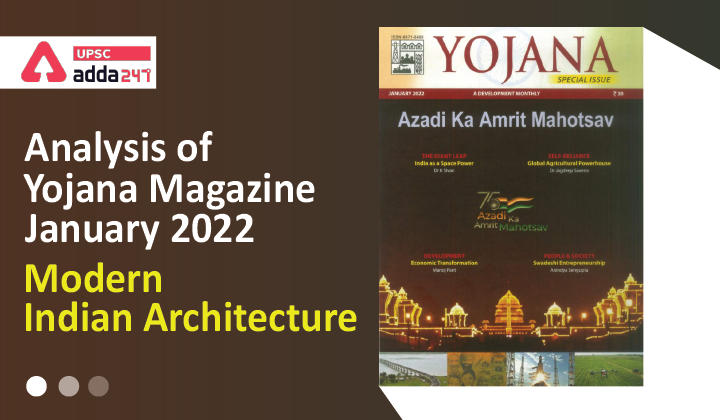Table of Contents
Introduction
- The Europeans came to India as traders and over gained power and established as rulers. They brought in the effects of industrial revolution as well as the European architectural styles.
- In the early 20th century some Indian architects also trained and adapted the European styles. Corbusier and Louis Kahn who were commissioned for projects in India also influenced many architects in India and started a trend in Modem Architecture.
What Kind of Architectural Style Britishers Brought to India?
- The Dutch, the French. Portuguese and especially the British brought European architectural styles to India.
- In many parts we can find beautiful buildings, mostly of the past centuries, which look like the European buildings.
- These buildings were actually designed by European architects in the prevailing architectural styles of Europe.
- The European architects mostly adopted the style having features from the Greek, Roman, Gothic and Renaissance architecture.
- Even though these buildings had a European appearance, they were designed to suit the Indian conditions kind of use.
- Many examples of administrative, educational, residential and other types of buildings of this type of architecture exist in many parts of India.
What is Gothic style architecture?
The architectural style in Europe that lasted from the mid-12th century to the 16th century, particularly a style of masonry building characterized by cavernous spaces with the expanse of walls broken up by overlaid tracery.
What is Indo-Saracenic style/Indo-Gothic style?
- The Indo-Saracenic style was promoted by British architects starting from the late 19th century. It is exemplified by the use of elements seen in architecture across India, from Mughal structures to Hindu temples.
- The style was dominated by Indo-Islamic elements, but sometimes combined with Gothic and neo-classical elements popular in Britain at that time.
- Indo-Saracenic was seen as the Raj’s efforts to promote “Indian” culture, so that their colonial subjects would view them more favourably, especially after the Revolt of 1857.
- At the same time, through its invocation of Mughal architecture, Indo-Saracenic sought to symbolically place the British Raj in line with the great empires of the Indian subcontinent.
- Notable features of the style include domes and domelets, chhattris, minarets, and open pavilions.
- Examples: Senet house, Baroda by Robert (1 840 AD – 1915 AD), works of Lutyens and Baker in New Delhi (early Gateway of India, Bombay -George Wittet Bhartiya Vidya Bhavan. Bombay -Claud Batley.
- Examples from other parts of India include the magnificent Victoria Memorial in Kolkata, the Amba Vilas Palace (Mysore Palace) in Mysuru, the Senate House (on the Madras University campus) in Chennai, and the Secretariat Building (Central Secretariat) in New Delhi.
Who was Le Corbusier?
- The commissioning of the Corbusier to design Chandigarh (the town and major buildings) brought about a new era in the development of contemporary architecture in India.
- Le Corbusier’s powerful vision of the future inspired many young Indian architects. Some of them trained under him whereas others studied the work of the other great modem masters of Europe and America.
- This gave rise to the new modem architectural style, which was rational, functional and imaginative.
Who was Lourie Baker?
- Louis a second generation modem master from America brought a new impetus to modern architecture in India, as Corbusier did a decade ago.
- His emphasis on geometrical order and use of traditional building methods like load bearing brick walls combined with reinforced concrete parts offered a powerful new aesthetics. Young Indian architects to abstract geometry and spatial order developing a new vocabulary in architectural design.
- A better building at half the cost had been his biggest achievement for past many decades, since he came to live and work in India. His projects (mainly in Kerala in south) of residential and institutional buildings are all a proof of his belief.
Contribution of Indian Architects
- While Le Corbusier and designed Chandigarh, there was a multitude of Indian architects who either worked with him or were inspired by his designs.
- After the city’s completion, the visual vocabulary set by it can be seen in Delhi as well.
- Jugal Kishore Chaudhary designed the Indian Institute of Technology campus(1961-84) and the Jawaharlal Nehru University campus( 1973+) was designed by the CPWD and CP Kanvinde show influences of Le Corbusier’s prismatic forms.
- Some designs use the formal vocabulary of Le Corbusier, so much so that one might think that they were prepared in his office. The Akbar Hotel (1965-69) and the highly creative Shri Ram Centre (1966-69) in New Delhi designed by Shiv Nath Prasad and the Inter State Bus Terminus (1969-71) designed by Rajinder kumar are two examples.
Conclusion
The articulation of architecture till the 1980s/90 has been difficult and the change now continues into the 2020s. The vision of modernism is fast-changing, especially in the context of Delhi. With the planned redevelopment/relocation of Teen Murti Bhawan and the Central Vista that includes, National Museum, Indira Gandhi Centre for the Arts, and other government office buildings around the Rajpath, India is heading towards a new vocabulary.



 TSPSC Group 1 Question Paper 2024, Downl...
TSPSC Group 1 Question Paper 2024, Downl...
 TSPSC Group 1 Answer key 2024 Out, Downl...
TSPSC Group 1 Answer key 2024 Out, Downl...
 UPSC Prelims 2024 Question Paper, Downlo...
UPSC Prelims 2024 Question Paper, Downlo...
